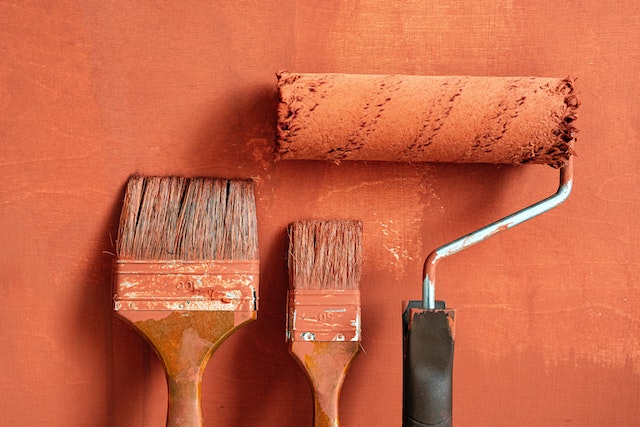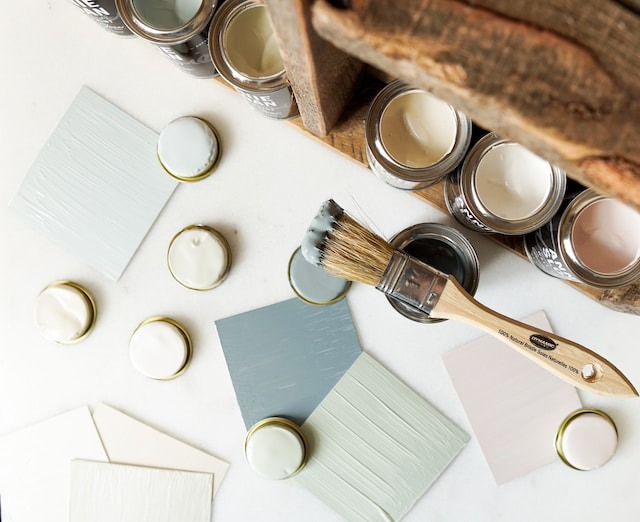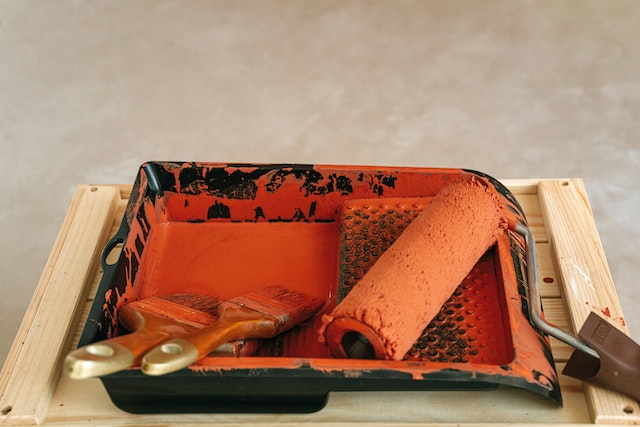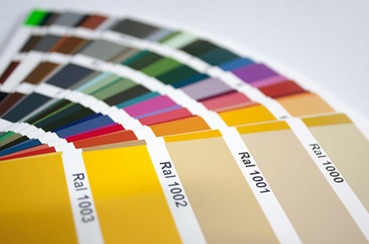
When it comes to house painting in San Ramon, CA, one of the most common and important tools is paintbrushes. They come in different shapes, sizes, and materials, making them versatile tools for painting. However, when painting homes, you should not just buy or use any paint brush. It’s because not all of them are created equally. Each of them is specifically made for certain surfaces and types of paint.
If you are going to paint your home, the question is, what type of paintbrush do you need? If you are wondering how to choose the right one, we’re here to help you. In this article, we are going to discuss the various types of paintbrushes available and how to choose the perfect one when you do house painting in San Ramon.
Different Types of Paintbrushes
As we’ve mentioned earlier, there are various types of paintbrushes to choose from, and each of them is made for different purposes, surfaces, and types of paint. To give you more ideas, below are the different types of paintbrushes:
- Wall Brush – A wall brush is ideally used for painting large, flat surfaces, such as paneling, doors, and walls. Most wall brushes come in three to six inches and have different bristle types.
- Angled Sash Brush – An angled sash brush features a slant on its bristle head. It is best used for painting on grooved surfaces like window trim, paneled and framed doors, cabinets, and specific types of walls.
- Round Sash Brush – A round sash brush features tapered, rounded, blunt bristles. This type of brush is preferred by faux and decorative finish painters because it provides them with greater control. It is also commonly used to paint smaller trim. They come in 20 to 40 millimeters, which are the sizes of their rounded bristle heads.
- Finishing Brush – A finishing brush, as its name suggests, is utilized for final coats on surfaces that require close and frequent treatment, such as kitchen cabinets. It can also be used for furniture finishes. This type of paintbrush is either made of natural materials like ox hair or their synthetic counterparts.
- Flagged Bristles Brush – Flagged brushes are called as such because they feature splits at the ends of the bristles. These ends allow the brush to hold more paint, resulting in an even, cleaner finish on the surface.
- Synthetic Brushes – Synthetic brushes are paintbrushes whose bristles are made of synthetic materials, such as nylon, polyester, or a combination of both. These brushes are commonly used to apply water-based paints as they do not soak up moisture and won’t go limp, unlike paint brushes made of natural materials. Also, synthetic brushes can hold their shape and stiffness even after many uses.
- Brushes with Natural Bristles – Paint brushes with natural bristles are made using natural sources like hair from oxen or boars. Their tips are naturally flagged or split. They are perfect for oil-based paints, shellac, or urethane but not for water-based paints.
- Short-Handled Trim Brushes – These brushes have angled bristle heads and a smaller handle. Comparable to a sash brush, it can also work on any grooved surface. However, it provides the user with greater control, particularly when painting in tight spaces and smaller trim. It can make your painting trim easier, faster, and less tiring. This is the perfect brush to use if you are going to paint a lot of trim.
- Foam Brushes – Foam brushes feature peculiar-looking brushes with an absorbent head. They can hold a good amount of paints, stains, or urethane of any kind. They can provide the surface a smoother finish, and most of them are disposable after they have been used. They are perfect for cabinetry, furniture, and trim painting.
Tips for Choosing the Right Type of Paint Brush
Since there are many different types of paintbrushes available, it is quite challenging to choose the right one for your home painting needs. But you don’t have to worry because there are ways in order to narrow down your options and pick the right one for your project. To further help you, here are the best tips for choosing the right type of paint brush:
Match the type of bristle to your finish.
As previously stated, paintbrushes have either synthetic or natural bristles manufactured from animal hair. If you’re planning to use water-cleanable paint or varnish, a paintbrush with synthetic bristles is preferable. But if you are applying oil-based varnish or paint, you need to look for a paintbrush with natural bristles.
You can still use synthetic paint brushes for oil-based paint. However, in most cases, natural bristles will provide a smoother finish. But you should avoid using natural bristle paint brushes when applying water-based paints as the bristles will soak up moisture and become too soft.
Pick the right size paintbrush for your project.
In addition to the bristle type, you also have to pay attention to the size of the paintbrush you need. If you are painting or varnishing woodwork, pick a small brush for more precise control. For most woodwork jobs, a 1-1/2-inch-wide paintbrush is a good choice. But if you are going to paint trim that is wider than 3 inches, you need to choose a paintbrush that is a little wider.
If you are painting walls, pick a paintbrush that is for cutting in. Painters usually use 3- or 4-inch-wide paint brushes for walls. But for DIYers, a 2-1/2-wide brush can be great. You should only use a paintbrush wider than 3 inches if you are going to paint wide siding, paneling, fencing, or other wide, flat surfaces.
Choose the right brush shape.
After deciding on the bristle and size of your paintbrush, you also need to consider its shape. When you look at different paint brushes, you will notice that some of them are cut at an angle while others have square ends. Angled brushes are easier to control and can help you paint more accurately. They are ideal for painting trim or cutting in before rolling paint on your walls.
Square-tipped brushes, on the other hand, are perfect for any flat, wide surfaces, such as paneling or fencing. There are also chisel trim brushes that feature slanted bristles. These produce a good, straight line, which is ideal for trimming in edges and corners. Getting two or more types of paintbrushes can be a good idea as they can be useful in different situations.
Select a high-quality paintbrush.
Some people choose to buy inexpensive brushes that they can just throw away after finishing the project. This makes sense if you’re doing something like spot priming with stain sealer, where the finish quality isn’t critical, and cleaning would necessitate the use of a solvent. Disposable, cheap paint brushes might work great for this. However, for most projects, particularly house painting, it is better to spend extra on a high-quality paintbrush. Paintbrushes of good quality can hold more paint, provide smoother results, last longer, and are easier to clean.
Conclusion
Having knowledge about the different types of paintbrushes can help you know what exactly you need when you do house painting in San Ramon, CA. We hope this article helped you learn more about choosing the right paintbrush. And if you need help with any painting task, don’t hesitate to contact Custom Painting, Inc. You may reach us at (925) 294-8062 to schedule an appointment for any painting needs.




